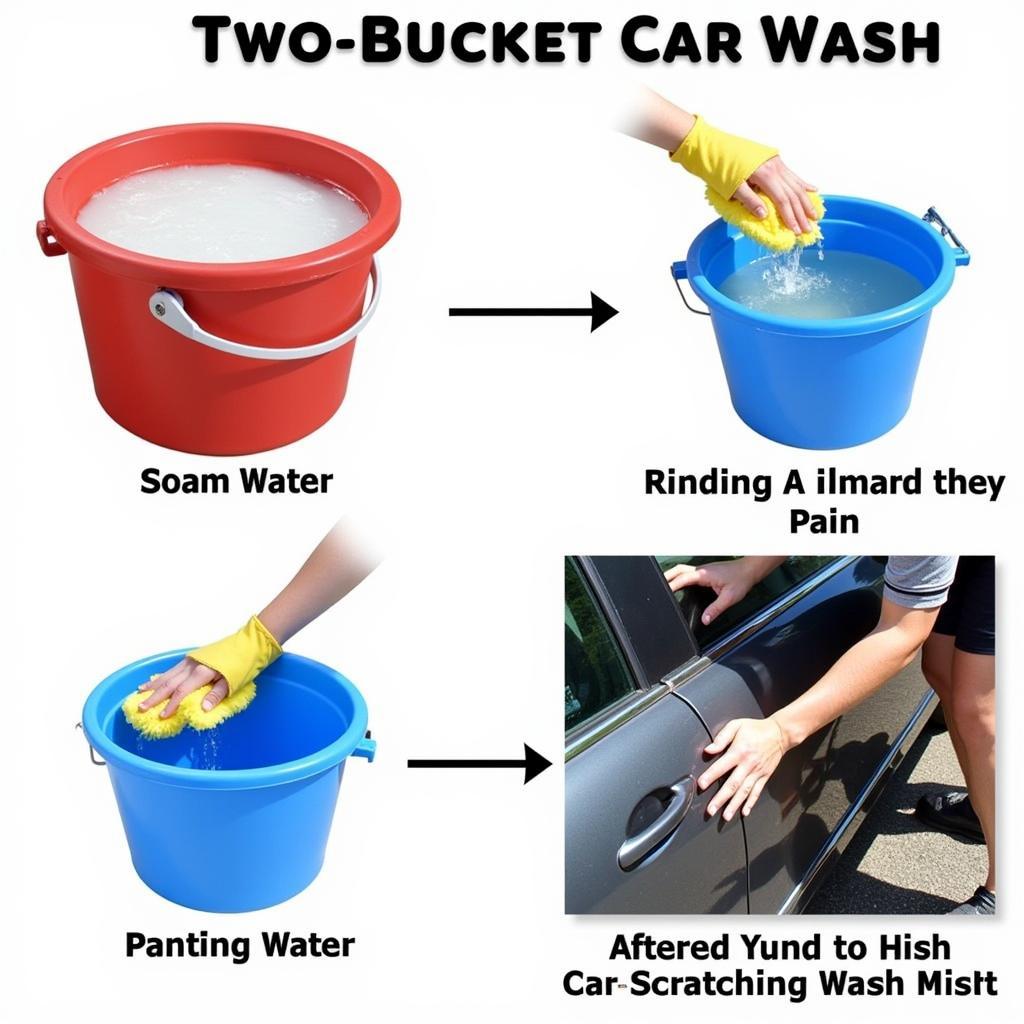Car detailing is more than just a car wash; it’s an art form dedicated to achieving the ultimate in automotive aesthetics. It involves a meticulous, multi-step process of cleaning, restoring, and protecting every surface of your vehicle, both inside and out. Whether you’re a car enthusiast looking to maximize your vehicle’s resale value or simply someone who takes pride in a spotless ride, knowing how to detail a car is a valuable skill. This guide will provide you with a comprehensive step-by-step process to achieve professional-level results.
Prepping Your Car for Detailing
Before you even think about touching a wash mitt, preparation is key. This involves gathering your supplies and creating the ideal environment for detailing. Park your car in a shaded area to prevent the cleaning products from drying too quickly and causing water spots. Next, gather your detailing arsenal: car wash soap, wash mitts, microfiber towels, wheel cleaner, tire dressing, a variety of detailing brushes, interior cleaner, glass cleaner, and a vacuum cleaner. Having everything at your fingertips will make the process much more efficient.
Washing and Drying: The Foundation of a Great Detail
Start by rinsing your car thoroughly to remove loose dirt and debris. Then, using the two-bucket method (one with soapy water and one with clean water for rinsing your mitt), wash your car section by section, working from top to bottom. This prevents swirling and minimizes the risk of scratching your paint. Pay particular attention to areas like the wheel wells and lower panels where dirt tends to accumulate. After washing, rinse again and dry immediately with high-quality microfiber towels.
 Car Wash Using the Two-Bucket Method
Car Wash Using the Two-Bucket Method
Wheel and Tire Detailing: Don’t Forget the Details
Your wheels and tires are often the dirtiest parts of your car and require special attention. Use a dedicated wheel cleaner and a variety of brushes to scrub away brake dust and grime. For tires, apply a tire dressing to restore their deep black shine and protect them from the elements. Remember to choose a tire dressing that is not overly glossy and won’t attract dust.
Paint Correction: Removing Imperfections
This step involves addressing imperfections in your car’s paint, such as swirl marks, scratches, and water spots. Depending on the severity of the imperfections, you might use a clay bar to remove contaminants embedded in the paint, followed by polishing compounds and a dual-action polisher to refine the surface. This process requires some skill and practice, so if you’re unsure, it’s best to consult with a professional detailer. You can find out more about professional detailing services by reading our article on how much to full detail a car.
Protecting Your Paint: Sealing and Waxing
After correcting your paint, it’s essential to protect it with a sealant or wax. Sealants provide a durable layer of protection against environmental contaminants and UV rays, while waxes add an extra layer of gloss and depth to the paint. Applying these products properly will ensure your hard work lasts. You can find out more about achieving a full car detail in our guide on how to fully detail a car.
Interior Detailing: Cleaning and Conditioning
The interior deserves just as much attention as the exterior. Start by thoroughly vacuuming the carpets, seats, and floor mats. Then, use an interior cleaner to wipe down all surfaces, including the dashboard, door panels, and center console. Don’t forget to clean and condition the leather seats to keep them supple and prevent cracking. Finally, clean the windows with a dedicated glass cleaner for a streak-free finish. Thinking about tipping your detailer? Check out our article on do you tip on a car detail.
Final Touches and Inspection: The Finishing Line
Once you’ve completed all the steps, take a step back and inspect your work. Look for any missed spots or areas that need extra attention. Wipe down any fingerprints or smudges. The goal is to achieve a uniform and flawless finish, both inside and out. For insights into the car detailing industry, see our article what industry is car detailing in.
Conclusion: Enjoying Your Pristine Ride
Learning how to detail a car can be a rewarding experience. It not only enhances your vehicle’s appearance but also helps to protect it from the elements and maintain its value. By following the steps outlined in this guide, you can achieve professional-level results and enjoy the satisfaction of driving a truly pristine car.
FAQ
-
How often should I detail my car? Ideally, every 3-6 months.
-
What is the best car wash soap to use? A pH-neutral formula is recommended.
-
Can I detail my car in direct sunlight? No, it’s best to work in a shaded area.
-
What is a clay bar? It’s used to remove contaminants embedded in the paint.
-
What’s the difference between a sealant and wax? Sealants provide longer-lasting protection, while waxes enhance shine.
-
How can I check my car details via SMS? For information on checking car details via SMS, visit our dedicated article how can i check my car details through sms.
-
Is it difficult to learn how to detail a car? With practice, anyone can achieve great results.
Need assistance? Contact us via WhatsApp: +1(641)206-8880, or Email: [email protected]. Our 24/7 customer service team is ready to help.

Leave a Reply